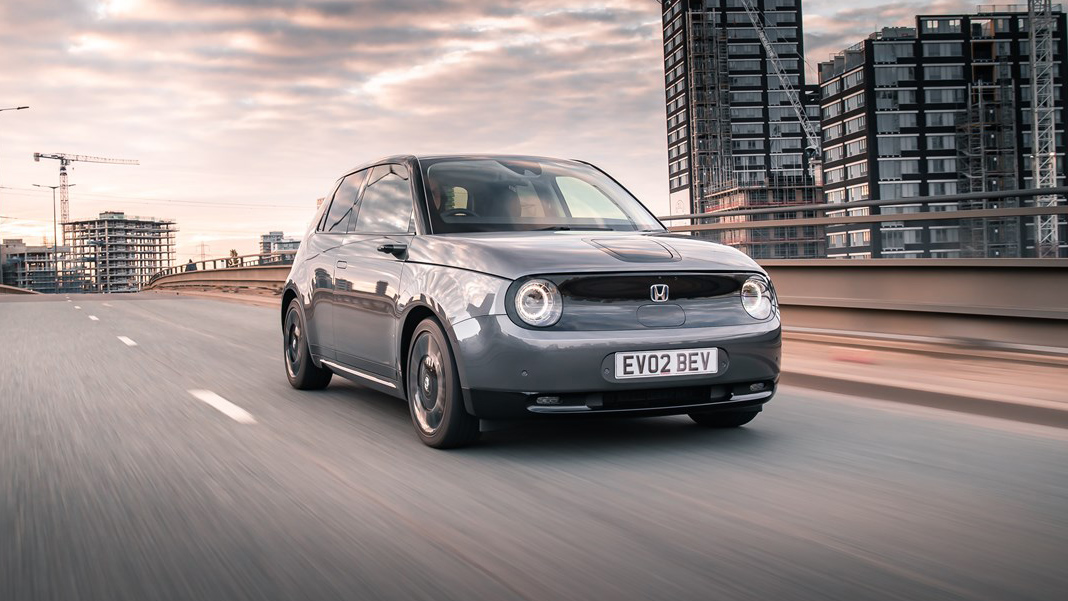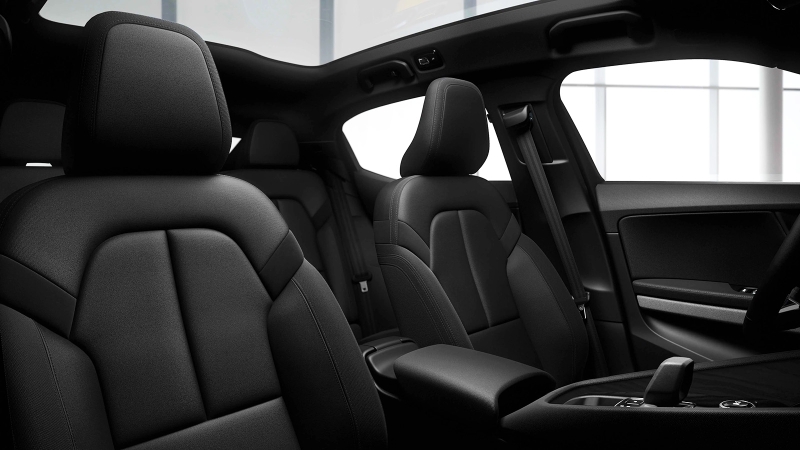

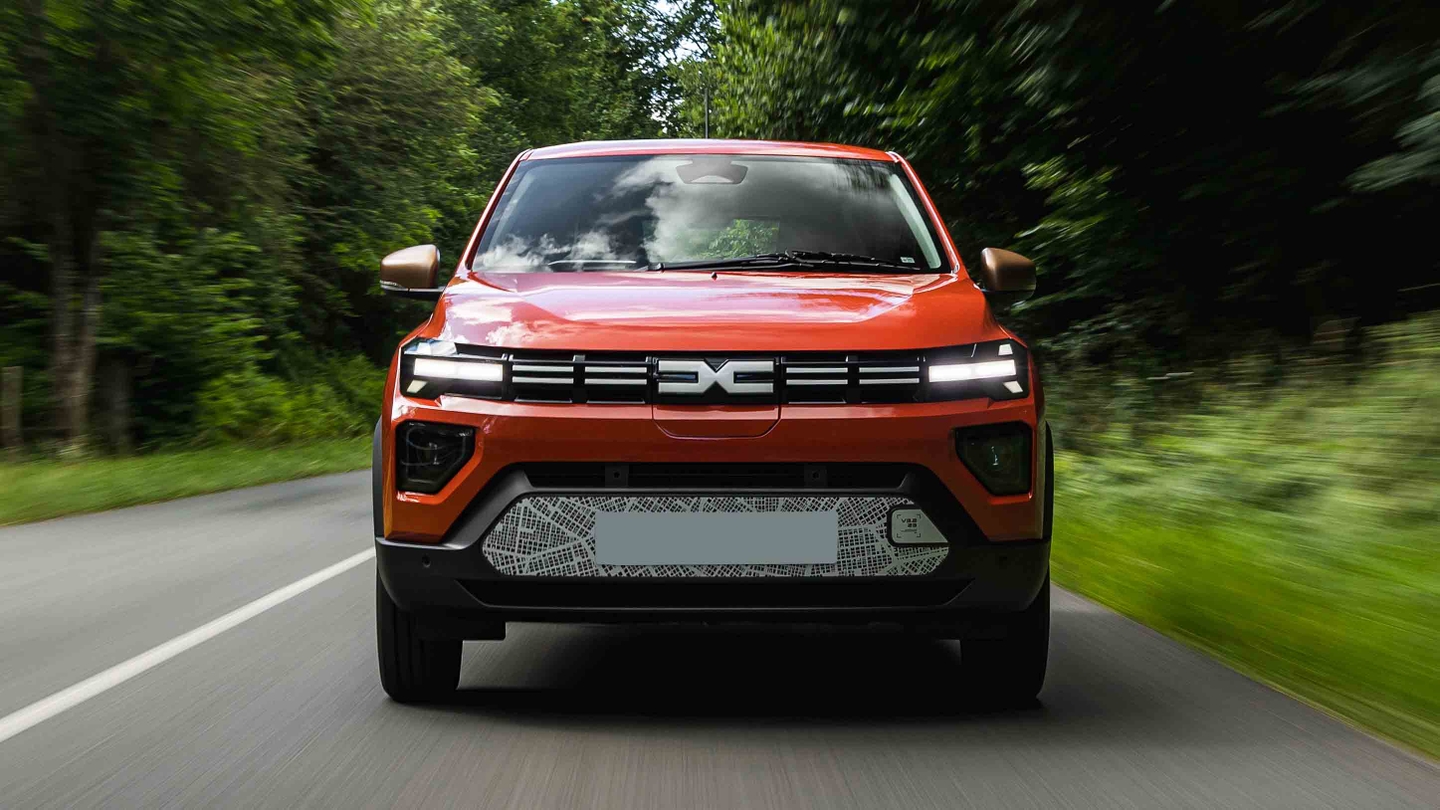


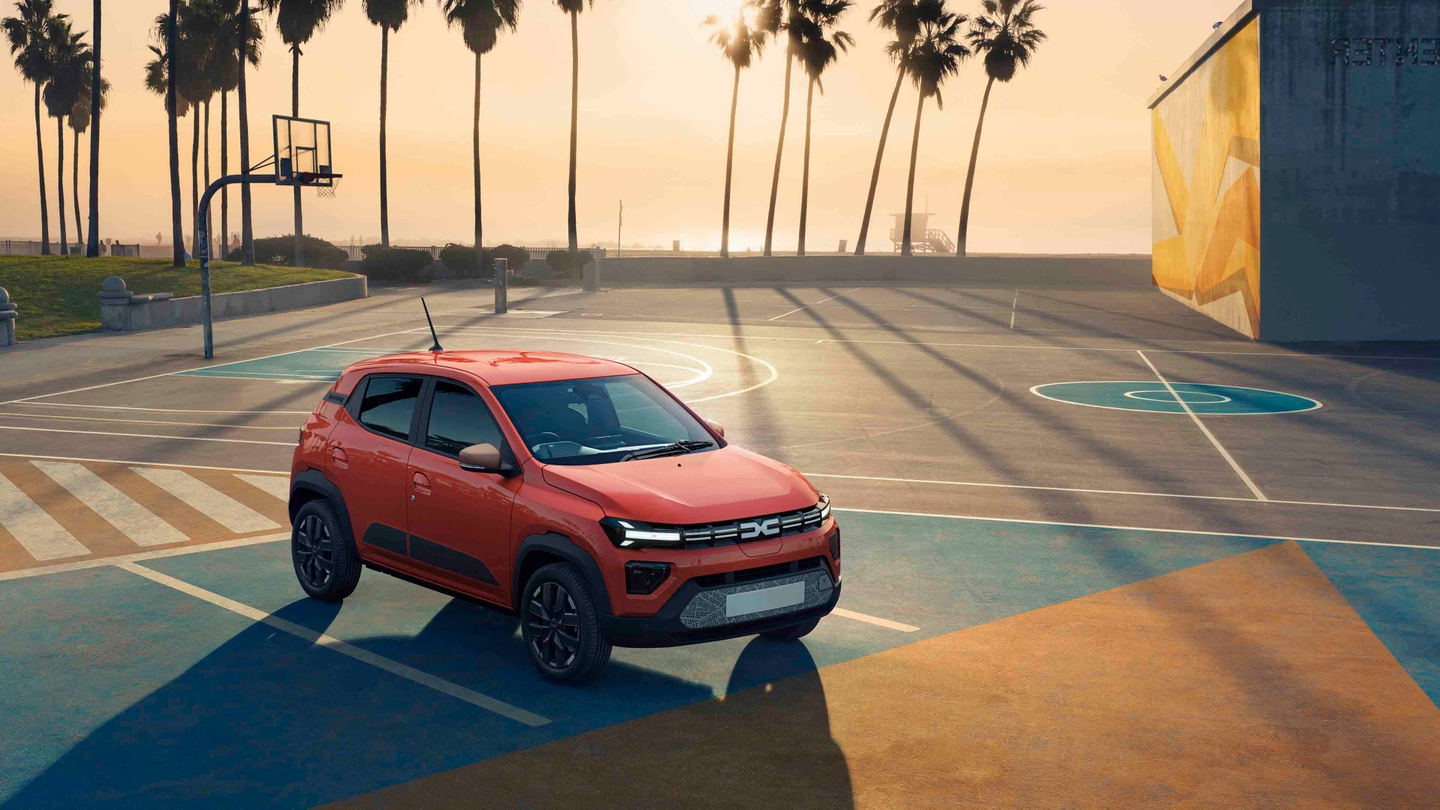

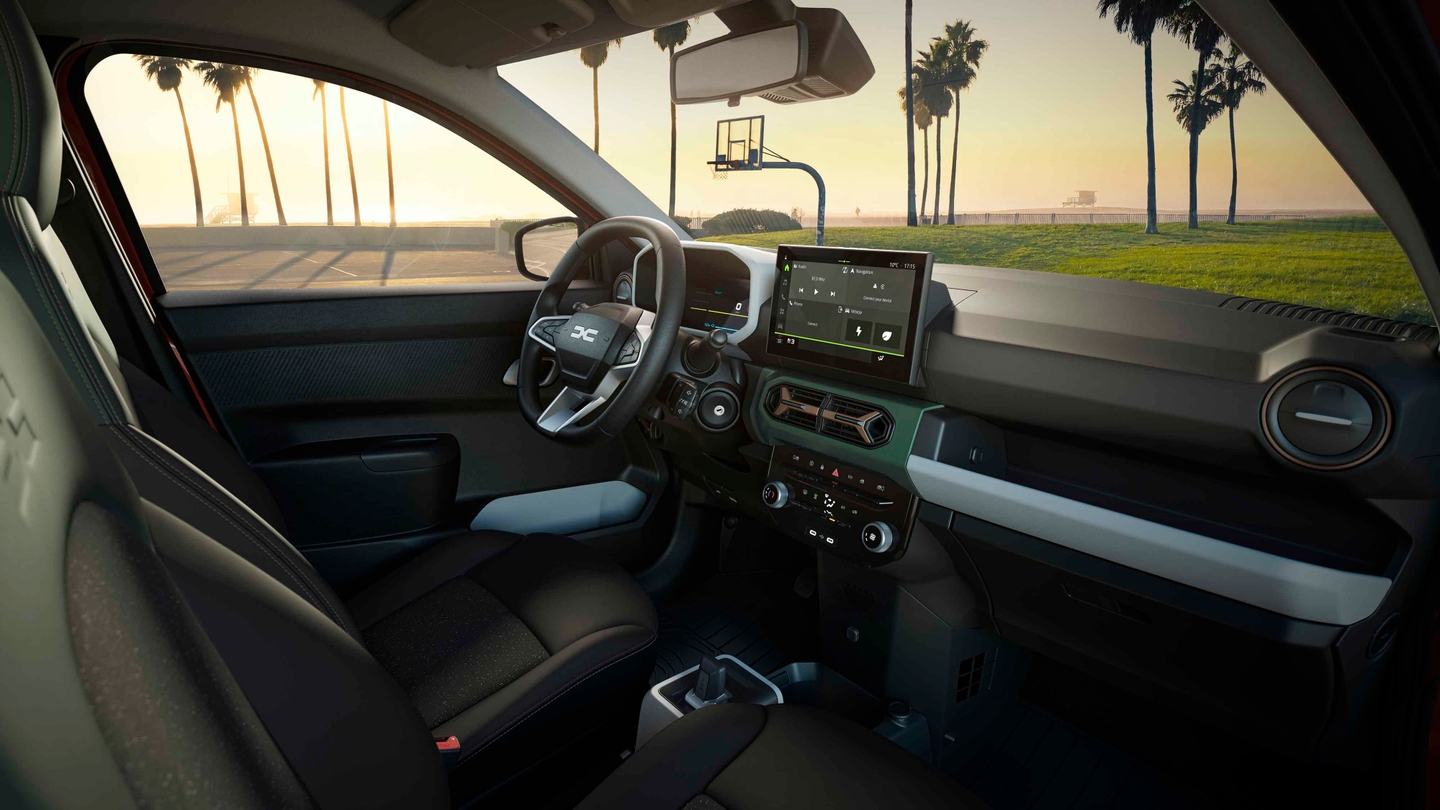
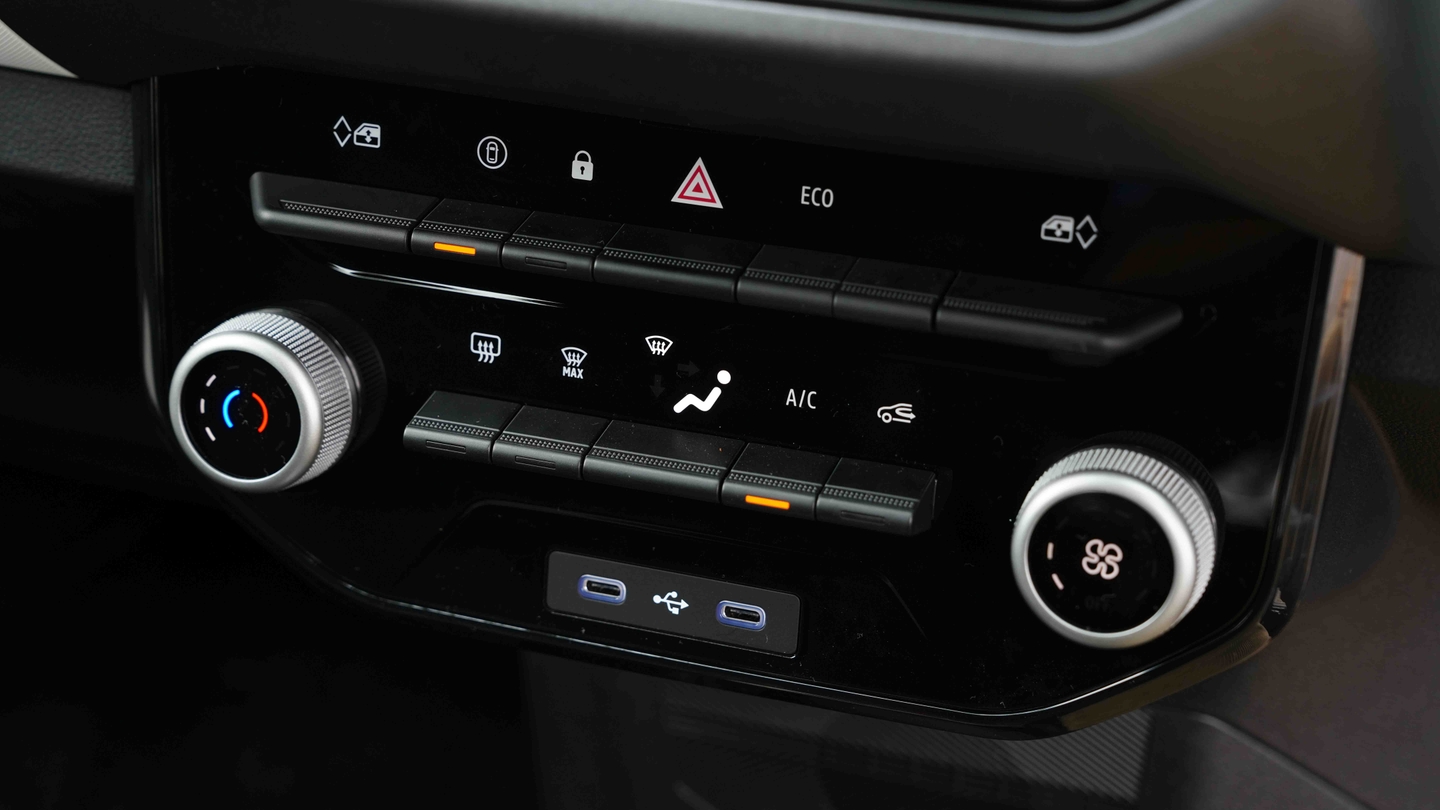
Dacia Spring Review

It might look like something out of a Kinder egg, but the Dacia Spring feels more grown up and more usable than you might expect.
Not only will it cost pennies to run, but it has just enough space for four adults and is incredibly easy to park.
- Impressive ride quality
- Low running costs
- Fairly well equipped
- Poor safety rating
- Not exactly spacious
- Tinny
Should I buy a Dacia Spring?
The halfpint Dacia Spring is the cheapest new electric car on sale today, and only marginally more expensive than the petrol Dacia Sandero. Ah, you might say, what about the Citroen Ami? Isn’t that a lot cheaper? And yes, the Citroen Ami is considerably cheaper, but it’s classed as a quadricycle (meaning no safety requirements) and tops out at 28mph.
The Spring might look like a toy car next to almost everything else on the road, but it does have front and side airbags, auto emergency braking and even Isofix child-seat points – none of which you’ll find on the Ami. And it’ll sit at motorway speeds for almost an hour if you really need it to.
"This might sound silly, but the most surprising thing about the Spring is how normally it drives"
As a new car, the Spring’s only really convincing rival is the Leapmotor T03, which beats the Spring for kit and for range (not by much, mind) but not for practicality or style. And it’s from a company that you probably haven’t heard of.
If you want a cheap-to-run car that’s smooth to drive, produces no exhaust emissions, is a doddle to park and comes with manufacturer’s warranty, the Spring absolutely nails it.
But if you’re willing to consider used electric cars, the case for the Spring is less clear cut. A three-year-old Nissan Leaf, Mazda MX-30 and Vauxhall Corsa-e are all similar money to a pre-registered Spring, and all are more spacious and faster – with the same or more range.
Interior and technology

The Spring is a cheap car and the interior really leans into that. There are no soft-touch plastics or leather-effect trim – it feels deliberately anti-posh. But that’s not to say that it feels horrible inside, because the build quality is decent and the coloured accents prevent the cabin from feeling drab. Same for the two-tone upholstery with contrast stitching. And those hard plastics will be really easy to keep clean with a quick wipe over.
The switchgear feels nice and solid, but it’s not hard to see where the money’s been saved. You get old-school, non-folding keys to start the car, a manual handbrake to stop it and little waggly stalks for the mirror adjustment.
Similarly, the steering wheel only adjusts for rake, not reach, and the seats aren’t height-adjustable. Not to mention as flat as a pancake. So it means you might not immediately find your ideal driving position, although the Spring’s city car billing means that might not be an issue if you’re only nipping across town.

It’s worth spending a little bit of time scrolling through the digital driver’s display and setting the car up how you like it. Partly because then you can set the ‘My Safety Perso’ mode to turn off some of the driver assist functions with two presses of a button, and partly because there’s no touchscreen on Expression versions so the driver’s display is home to the media playback and telephony functions.
Standard equipment on the Expression trim includes rear parking sensors, cruise control, lane-keep assist, Bluetooth, DAB radio, air conditioning, LED daytime running lights and auto headlights. Upgrading to the Extreme trim level brings brown copper detailing inside and out, front parking sensors, a reversing camera, electrically adjustable mirrors, electric rear windows and a 10.1-inch touchscreen with built-in sat nav and wireless Apple CarPlay/ Android Auto.
Practicality
Clearly, the Spring isn’t built to give its occupants limousine-like space or haul big loads (although a van version is available). There’s just enough space for an average-sized adult to sit behind someone the same size, and likewise for two adults sitting side by side on the rear bench. Anyone taller than average will find they’ve not got enough headroom, which is a little disappointing.
In both scenarios you’ll probably be relying on the people in the front sitting quite straight and not reclined. Despite being fractionally smaller than the Spring, both the Hyundai i10 and Kia Picanto offer more interior space.
The Spring is a narrow car – with mirrors out it’s a whole 10cm slimmer than a Fiat 500e. As such it’s no surprise that the Spring is a strict four-seater, just like most rivals, but you do notice its narrowness, especially sitting up front. Let’s call it snug. We found we were sitting right against the door pillar and still occasionally nudged the person sitting next to us.

Considering the Spring is built on a platform that’s also been used for petrol cars, upfront storage is impressive. There’s a useful shelf above a decent-sized glovebox, plus big door bins and space for a small bag ahead of the gear selector podium.
The boot is even better – it’s class-leading, in fact. At 308 litres it’s considerably bigger than the i10, Volkswagen e-Up and Fiat 500. It’s deep, like those cars, but longer too, making it more useful for more varied items. Unfortunately, split-folding rear seats aren’t an option, although folding down the rear bench frees up another 700 litres of space if you don’t mind loading to the roof.
Dacia offers the Spring with three of its thoughtful YouClip points, to which you can attach accessories such as a wireless phone charger, a multifunction cup holder or a hook. Annoyingly, a frunk, which would be handy for cable storage, is relegated to the options list.
Range and performance
All Springs come with a 27kWh battery and a claimed 140-mile range. To match that, you’ll need to achieve 5.2mi/kWh, which should be easily beatable around town. On our mixed-route test drive in about 12-degree weather, we saw 3.5mi/kWh, which equates to 93 miles of range. For sustained motorway driving, you’ll get about 60 miles from the battery. The Spring’s digital dash shows your estimated remaining range for different types of driving, handily.
Two teeny tiny motors are available, with either 45hp or 65hp. The former is the least powerful car you buy right now, and the 0-62mph time of 19 seconds sounds frankly terrifying. However, it’s worth noting that the 0-31mph time of the 45hp Spring is six seconds, so the entry-level motor isn’t short of shove around town. You’ll still need to be patient with it, because the power is metered out in quite a relaxed way.

Out of town, acceleration is glacial in the 45hp version. Once you’ve coaxed the motor to give all it’s got, it will sit at motorway speeds – but there’s nothing left for overtakes or steep inclines.
We’d pick the 65hp motor. It’s a little quicker off the line, which is beneficial for when you need to leave a junction or for nipping into gaps in traffic. The 65hp motor takes just 3.9 seconds to get from 0-31mph, and 13.7 seconds for the full 0-62mph dash – highlighting that the Spring is ideally suited to urban sprawl.
What’s more, public fast-charging is only available on the 65hp motor. Well, we say ‘fast’, but the Spring’s max rate of 30kW isn’t exactly amazing. A 20-80% top-up will still take 45 minutes. Much more convenient to plug in to a home wallbox, which does a 20-100% charge in six hours.
This means the Spring can make the most of the cheap charging windows offered on EV-specific home electricity tariffs. At a cheap overnight rate of 7p/kWh, a full charge will cost less than £1.90. Best to schedule it through your wallbox or your energy provider, because only the top-spec Spring gets access to the EV features on the Dacia phone app.
Driving and comfort
This might sound silly, but the most surprising thing about the Spring is how normally it drives. Forget the tinny door clangs and the motorcycle-rivalling narrowness, and the Spring feels like a normal car. It can mix it with fast-moving traffic on a motorway or dual carriageway and you don’t feel like you’re in danger.
And then, you notice how comfortable it is. A real featherweight by modern car standards, the one-tonne Spring skips over potholes as if they’re not even there. Like a frolicking lamb treading lightly on fresh grass.

Refinement isn’t quite so fantastic, because the Dacia’s sparing sound insulation becomes apparent. This is a cheap car so the low-speed drivetrain noise and high-speed tyre and wind noise is easy to live with – if it’s a bit loud just turn up the Taylor Swift a bit and rock on.
A 65hp lightweight car, regardless of fuel type, should really feel like a go kart. Unfortunately the steering is light and vague, and it leans at any hint of a corner. The Spring sits high – and you can even get non-functional roof bars as an optional extra for that pinch of SUV style – but it’d probably handle better and feel less tippy if it sat lower.
The 165-section tyres that Dacia ships the Spring with aren’t the grippiest, let’s say. Take a roundabout at normal speeds and you’ll feel the car start to wash wide. It’s disconcerting until you realise you’re perfectly safe because you’re only doing about 20mph. Similarly, the 65hp motor can overwhelm the tyres and cause wheelspin, so you can drive like a hooligan at 5mph and have fun without endangering passers-by. And replacement tyres are only £60 a corner, so it’s not even that expensive if you do end up wheelspinning out of every junction.















































